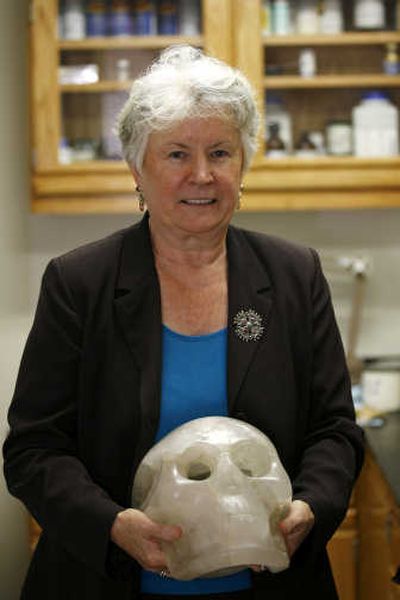Indy’s tomb-raiding style makes scholars cringe

Indiana Jones managed to retrieve the trinket he was after in the opening moments of “Raiders of the Lost Ark,” but he pretty much wrecked everything else in the ancient South American temple where the little gold idol had rested for millennia.
Though he preaches research and good science in the classroom, the world’s most famous archaeologist often is an acquisitive tomb raider in the field, with a scorched-earth policy about what he leaves behind.
Real experts in antiquities acknowledge that the movies are pure fiction, yet they can’t help but cringe at the way Indy manhandles the ancient world.
“There are codes of ethics in archaeology, and I don’t think he would be a member. Not in good standing, anyway,” says Mark Rose, online editorial director for the Archaeological Institute of America.
In a career spanning 27 years and three previous films, Indy has been both a blessing and curse for the musty world of archaeology, fanning interest in the field beyond academic circles but doing a Hollywood number on how the job actually works.
In 1989’s “Indiana Jones and the Last Crusade,” nerdy Professor Henry Jones Jr. tells students that 70 percent of archaeology is done in the library and advises them to “forget any ideas you’ve got about lost cities, exotic travel and digging up the world. We do not follow maps to buried treasure, and ‘X’ never, ever marks the spot.”
Trading his classroom tweeds for his leather jacket and fedora hat, his alter-ego Indiana Jones then proceeds to smash through crypts, kill scores of Nazis and desecrate a grave by using a human leg bone as a torch. And in one scene, “X” literally does mark the spot.
But the reality of archaeological field work is not a lone hero dashing into hidden chambers with a bullwhip and a pistol and coming away with a priceless relic. It’s large groups of academics and students painstakingly sifting through grids to retrieve artifacts as mundane as pottery fragments.
“To be honest, it’s a lot of drudge work,” Rose says. “You can end up producing a 600-page Ph.D. dissertation, and it’s important and useful and it’s good that someone has done it. But it’s not going to be made into a major motion picture anytime soon.”
Paul Zimansky, an archaeology professor at the State University of New York at Stony Brook, once had an adventure reminiscent of Indy’s fear of snakes. He had to drive at breakneck speed to get a colleague to a doctor after he was bitten by a viper in Iran.
On a dig in Iraq, one student dressed like Indy, minus the whip, and whenever the team made a notable find, they would play the “Indiana Jones” fanfare, he adds.
Indy has been as an inspiration to aspiring archaeologists, says Zimansky, who noticed a spike in new students in the early 1990s.
“If you asked these people why they were becoming archaeologists, it always starts off with Indiana Jones,” he says.
The students certainly knew they were studying to be scholars, not treasure hunters, though Zimansky would have liked Indy to be a more realistic role model.
“I wish he’d take more notes and things,” Zimansky says. “What’s his publication record?”
Other than Indy’s brief classroom scenes, the closest thing to authentic archaeology in the “Indiana Jones” flicks is done by the bad guys, whose elaborate, systematic digs in “Raiders” resemble actual excavations.
“Not a whole lot of what we know as archaeology goes on in these movies, except what the Nazis do,” says Jane MacLaren Walsh, an anthropologist for the Smithsonian Institution’s National Museum who wrote the cover story in the May-June issue of Archaeology magazine examining the real history of crystal skulls featured in the new film.
Jaime Awe, director of the Institute of Archaeology in Belize, says he’s a big fan of the “Indiana Jones” movies, but shows them to students as “examples of what not to do.”
“I tell them the only difference between Indiana Jones and myself is he always gets the goodies and gets the beautiful women and gets paid a lot of money, and I don’t get any of that,” Awe says. “But I have a hell of a lot of fun just like he does, and it’s just as much an adventure.
“Most of us do archaeology because we love the opportunity to explore, to discover, to search for clues. It’s like having a big sandbox. Like Indiana Jones, we keep being kids at heart.”